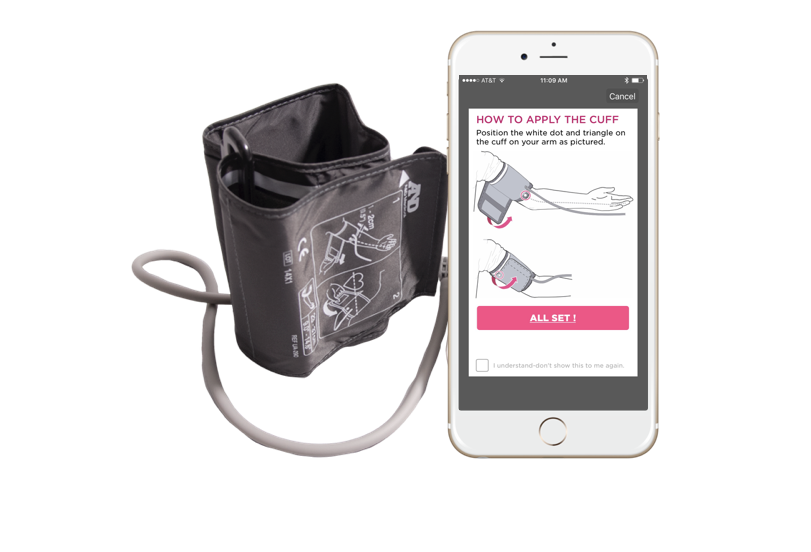
Even in 2017, 1 in 10 babies [1] in the United States continue to be born before 37 weeks, according to the Centers for Disease Control and Prevention. Worldwide, preterm birth complications remain the leading cause of death [2] among children under the age of 5, according to WHO.
Preterm babies are at greater risk for breathing problems, feeding difficulties, cerebral palsy, development delays, vision problems, learning disabilities and other long-term complications. Preterm birth can also be financially and (of course) emotionally stressful for new parents should their newborn end up in the NICU.
Unfortunately in 2017, in some cases, preterm births can’t be prevented. On the other hand, carefully planned prenatal care that starts in the first trimester, along with increased communication between an expecting mother and her care team, can lead to better birth outcomes. Therefore, better connectivity can help pregnancies carry to 39 to 40 weeks. This is especially important for high-risk pregnancies, where moms-to-be can benefit from additional monitoring and connectivity to their doctors throughout pregnancy.
Here’s a more in-depth look at how connectivity leveraged from the Babyscripts platform can give doctors more individualized patient data throughout pregnancy. This date gives care teams the ability to better assess risk for preterm birth in real time.
First trimester
One of the most important aspects of early prenatal care is patient history and risk assessment. This can help care teams assess how to best leverage monitoring in between appointments. For example, a patient with a history of diabetes can track weight and glucose readings through the Babyscripts platform.
.png?width=1000&name=1_Dqk8aVZl1Eq1_Eit6oLkFA%20(1).png)
Doctors can also leverage weekly task notifications in the Babyscripts app to remind patients to eat a healthy diet and take prenatal vitamins, folic acid, and avoid alcohol, drugs/smoking, etc. These educational reminders can be especially helpful for first-time moms and can help prevent preterm labor later on. Moreover, offering an educational and engaging app platform where patients can access clinically-approved answers to their questions and alert their care team of any concerns/changes (especially if it’s their first pregnancy) can help busy moms-to-be have an overall healthier pregnancy that goes to full-term.
Second trimester
Conditions like gestational diabetes and high blood pressure often develop between the second and third trimester. Both conditions can put you at risk at risk for maternal and fetal complications during delivery, so it’s important to monitor and connect with patients during these weeks, especially should their weight or blood pressure rise to dangerous levels. For example, the current recommendation for weight gain is just 1 to 2 pounds per week during the second trimester and to keep blood pressure less than 140/90 mm Hg during a low-risk pregnancy.

High blood pressure during pregnancy is one of the key indicators that preeclampsia is developing. A rise in diastolic (15 degrees or more [3]) or systolic blood pressure (30 degrees or more [3]) can also be cause for concern. Luckily, in most cases, women can simply keep track of their blood pressure and weight at home using a blood pressure cuff and scale. Tracking their progress through real time remote monitoring, and capturing the data in a user-friendly dashboard for the OBGYN and care team can not only help appointments go smoother but also alert doctors and nurses immediately should anything go wrong.
Third trimester
Signs and symptoms of preterm labor, including a backache or pelvic pressure, might not always be obvious, especially in the third trimester. Conditions like gestational diabetes and preeclampsia may also become more serious during the last trimester. That’s why it’s so important for patients to stay in contact with their care team during the final weeks of pregnancy and have the ability to alert their doctors quickly should any issues arise. Expecting moms can continue to monitor their weight and blood pressure at home. Of course, monitoring high blood pressure [4] is an important factor in determining if a patient needs to deliver before 37 weeks out of necessity to avoid serious health problems, according to the March of Dimes.
Care teams can also be proactive during the third trimester by sending gestation specific tips to patients with reminders about obvious symptoms of preterm labor, such as contractions every 10 minutes or more, change in vaginal discharge and a low, dull backache. If the patient is aware of these symptoms before she experiences them, she’ll be more likely to contact her OBGYN and get the care she needs.
The bottom line
When expectant mothers are able to access a program like Babyscripts and know that their provider is monitoring them for elevated risk, it can cut down on the stress of whether they need to come in to get checked out or head to the hospital immediately. To learn more about how increased connectivity can result in healthier pregnancies and help moms carry babies to full-term, visit our website [5].

Submit a comment